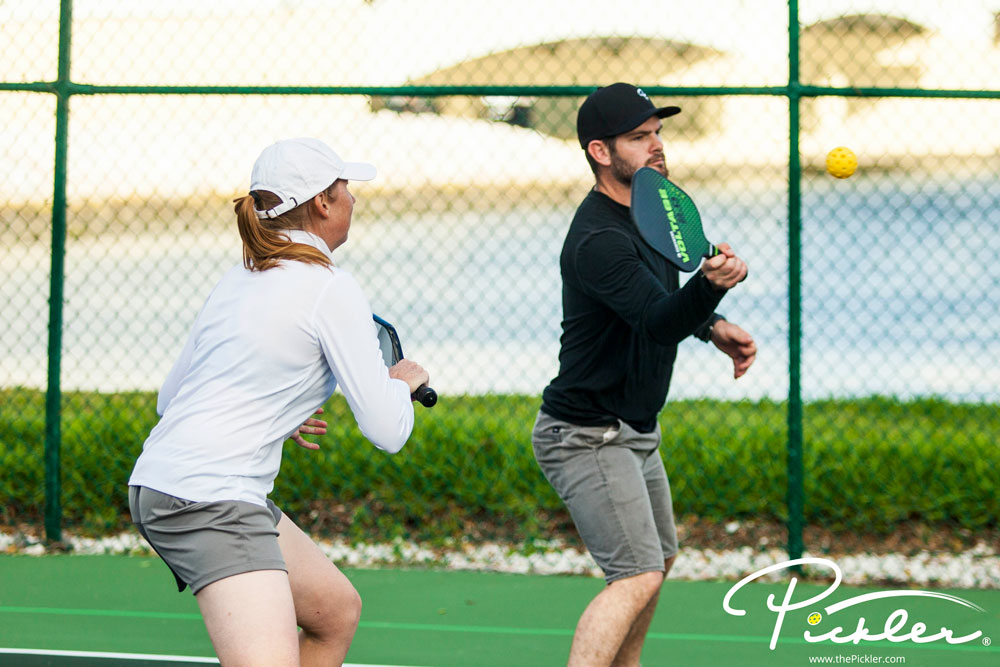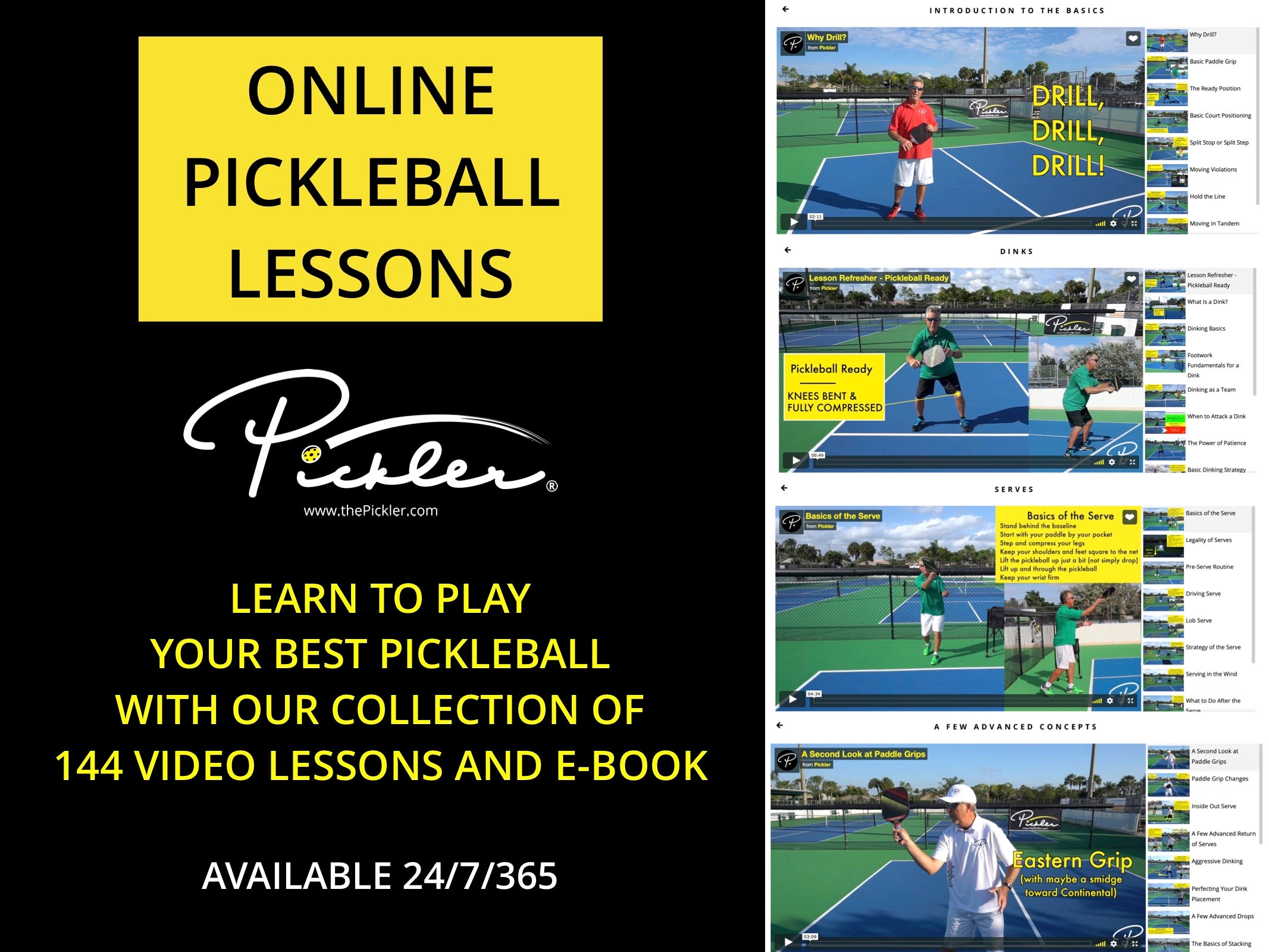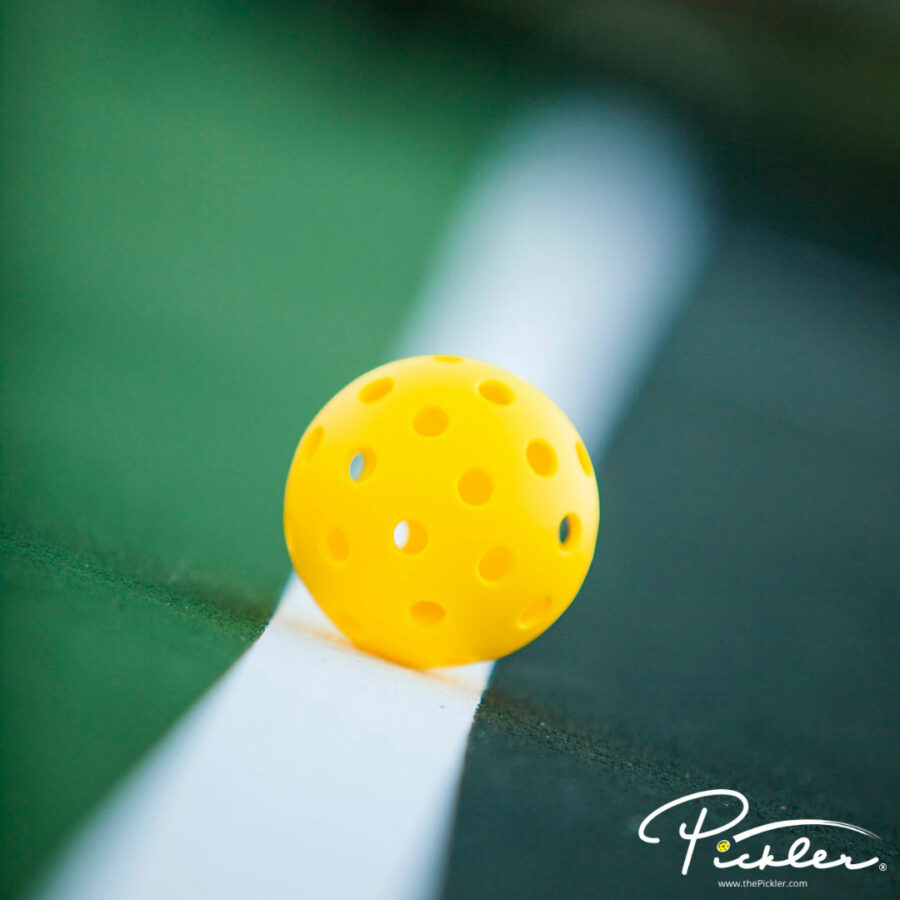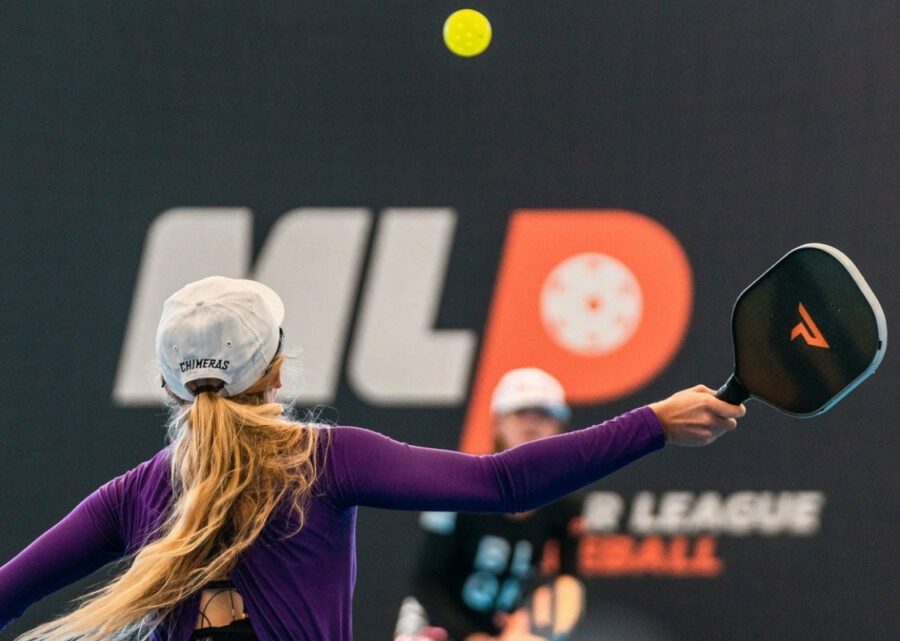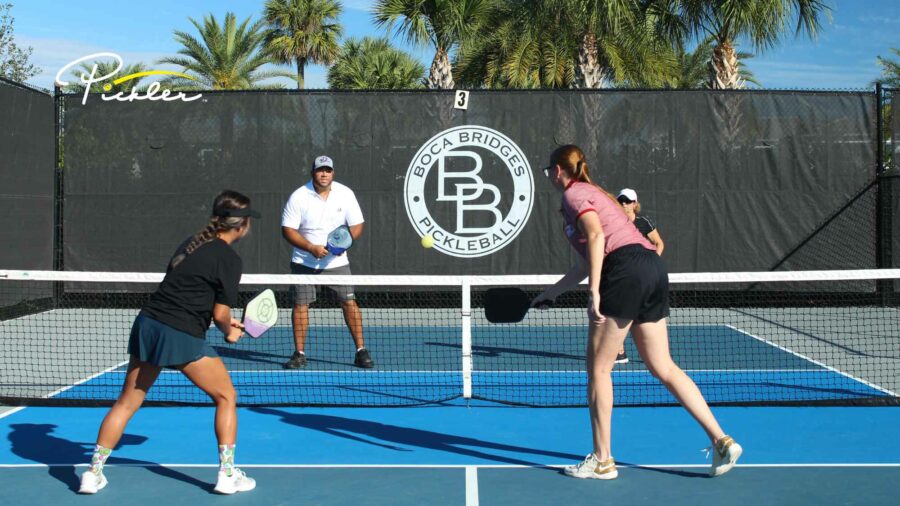“Down the middle solves the riddle.” We have all heard this idiom before on the pickleball court. There is a strategy in pickleball to hit shots “down the middle” in doubles pickleball.
What is this middle strategy? Why is the middle strategy effective in doubles pickleball? How can you execute the middle strategy? Learn the answers to these questions, and whether the middle is the best pickleball strategy, in this pickleball blog.
What Is the Middle Strategy in Pickleball
First, what does “down the middle” mean? What is the middle strategy?
The middle strategy does not mean hitting the pickleball down the center of the pickleball court (or the centerline). Rather, the middle strategy means hitting shots between your opponents in doubles pickleball—in other words, splitting your opponents in half, wherever they may be positioned on the court.
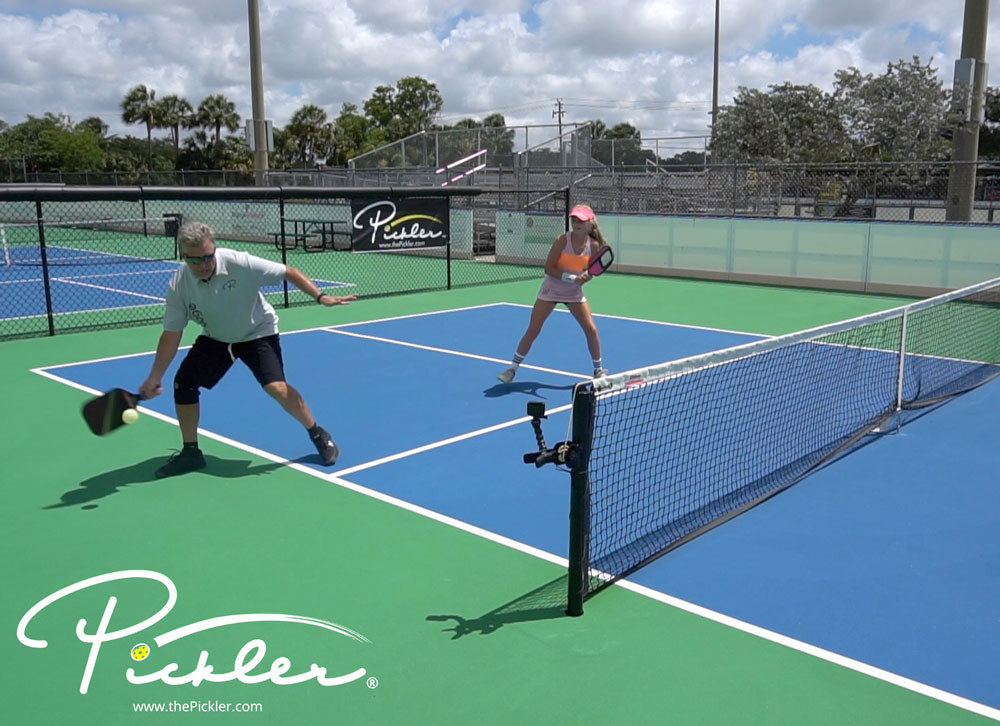
When hitting down the middle and splitting your opponents, it may be a good idea to give a little margin of error toward your opponent with his or her backhand side in the middle of the pickleball court. Generally speaking, pickleball players tend to be weaker on their backhand sides, as opposed to their forehand sides. So, when directing your shots between your opponents, give yourself a slight margin of error toward your opponent with his or her backhand in the middle of the court.
Why Is the Middle Strategy Effective in Pickleball
The middle strategy is effective for a few reasons:
- High Percentage – When using the middle strategy, you are generally hitting the pickleball into the biggest area of the court—the middle. You are giving yourself a high margin for error, as opposed to hitting shots near the sidelines.
- Lowest Part of the Net – When hitting “down the middle,” you are also giving yourself a higher percentage of success because you are hitting the pickleball over the lowest part of the net—the middle. As a reminder, the middle of the pickleball net is only 34 inches, as opposed to the net by the sidelines, which is 36 inches. The lower part of the net should translate into less shots into the net.

- Reduced Angles for Your Opponents – Your opponents will have less angles on their shots in response to your middle balls. They will not be able to create as many angles against you (and your partner in doubles pickleball).
- Confusion Amongst Your Opponents – In doubles pickleball, middle balls can cause confusion amongst teams as players tend to both crash toward the pickleball and may fight with each other to take the shot. For instance, (i) paddles could crash causing a mishit of the pickleball, (ii) both players could pull off and allow the other to take the shot, which will lead to the pickleball flying untouched down the middle of the court, or (iii) one player could hesitate and then mishit the pickleball. In other words, middle balls can cause mistakes, which is especially true when your opponents are new to playing with each other.
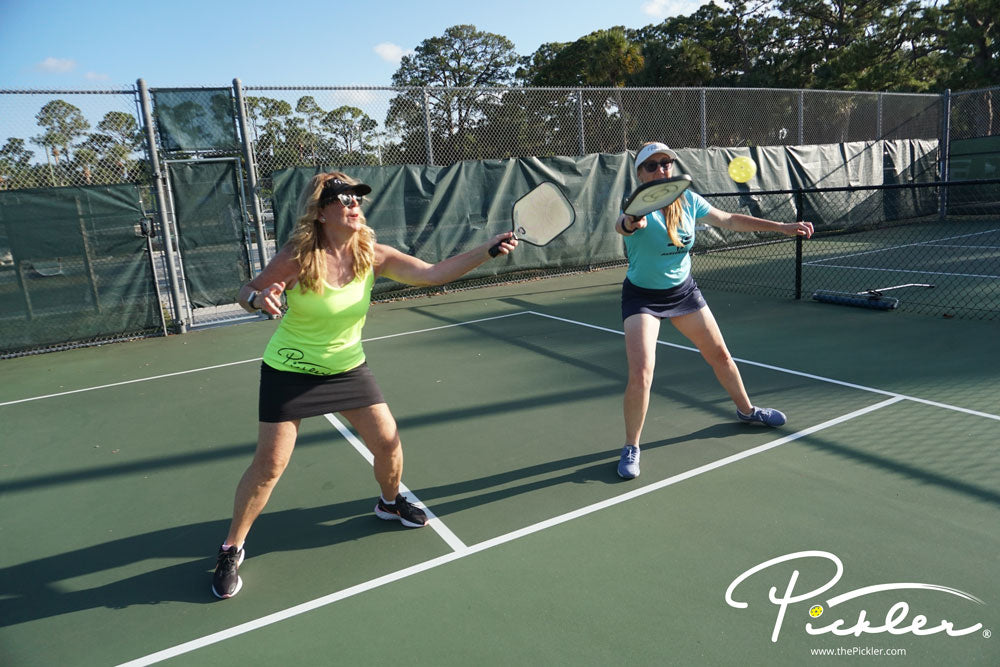
- Less to Think About – When you are mentally tired (for instance, after a long day of playing) or not sure where to hit the pickleball, the middle strategy is effective because it gives you less to think about. It allows you to focus only on hitting a good shot, rather than hitting a good shot and where to hit the good shot.
Advanced Middle Strategy Concepts
As noted above, generally speaking, the middle strategy means to hit between your two opponents in doubles pickleball. Let’s take a deeper dive on the middle strategy with specific shots on the pickleball court:
New Partnerships
It is worth noting again that the middle strategy is particularly effective with new partnerships, where your opponents do not have much experience playing with each other. The middle balls will cause a lot of confusion.
Serves & Returns
As noted above, hitting toward the middle of the pickleball court reduces your opponents’ opportunity to hit a shot with a lot of angles. There are smaller angles in the middle of the court. As a result, hitting your serves and return of serves in the middle of the pickleball court can be a good strategy.
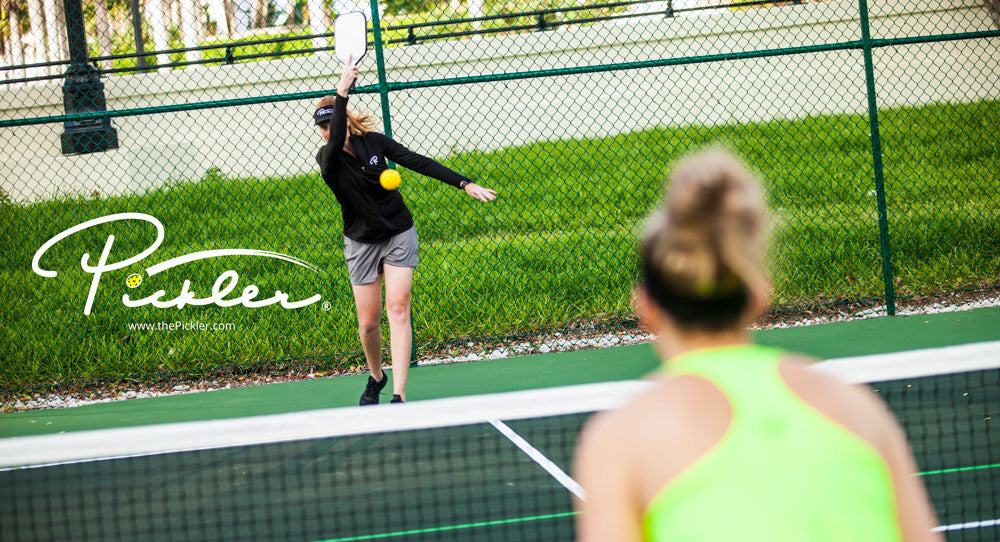
Plus, for returns, your opponents may fight over who will take the third shot. (To note, this concept of a “down the middle” strategy is obviously more applicable to doubles pickleball. However, the serve into the middle of the pickleball court is more important in singles pickleball and is an effective strategy. For more on singles pickleball, including 9 tips to win big in singles pickleball, click here.)
In doubles pickleball, you likely want to mix up your serve and, if your opponents are stacking or switching, you will actually want to hit your serve toward the sidelines, rather than the middle—so, there are exceptions to the general rule! For more information on the serve, including 7 tips for a killer pickleball serve, click here.
Third Shot: Drops & Drives
Aiming between your opponents when hitting your third shot—whether it is a drop or a drive—is also a good strategy. Remember, one of your opponents in doubles pickleball will already be at the net. The goal with a middle third shot would be to get the opponent at the net moving and reaching over the centerline to hit your third shot. By getting your opponent moving and reaching, he or she will be more likely to make errors. Plus, since your opponent was moving, you will have created space near the sideline for your next shot if your opponent does not regain court positioning. If the opponent at the net does not hit your third shot, then it will be a difficult shot for your other opponent who is moving in from the baseline. Any shots on the move are more likely to result in errors. So, with that said, try hitting some of your third shots down the middle of your opponents, just out of reach for your opponent standing at the net.
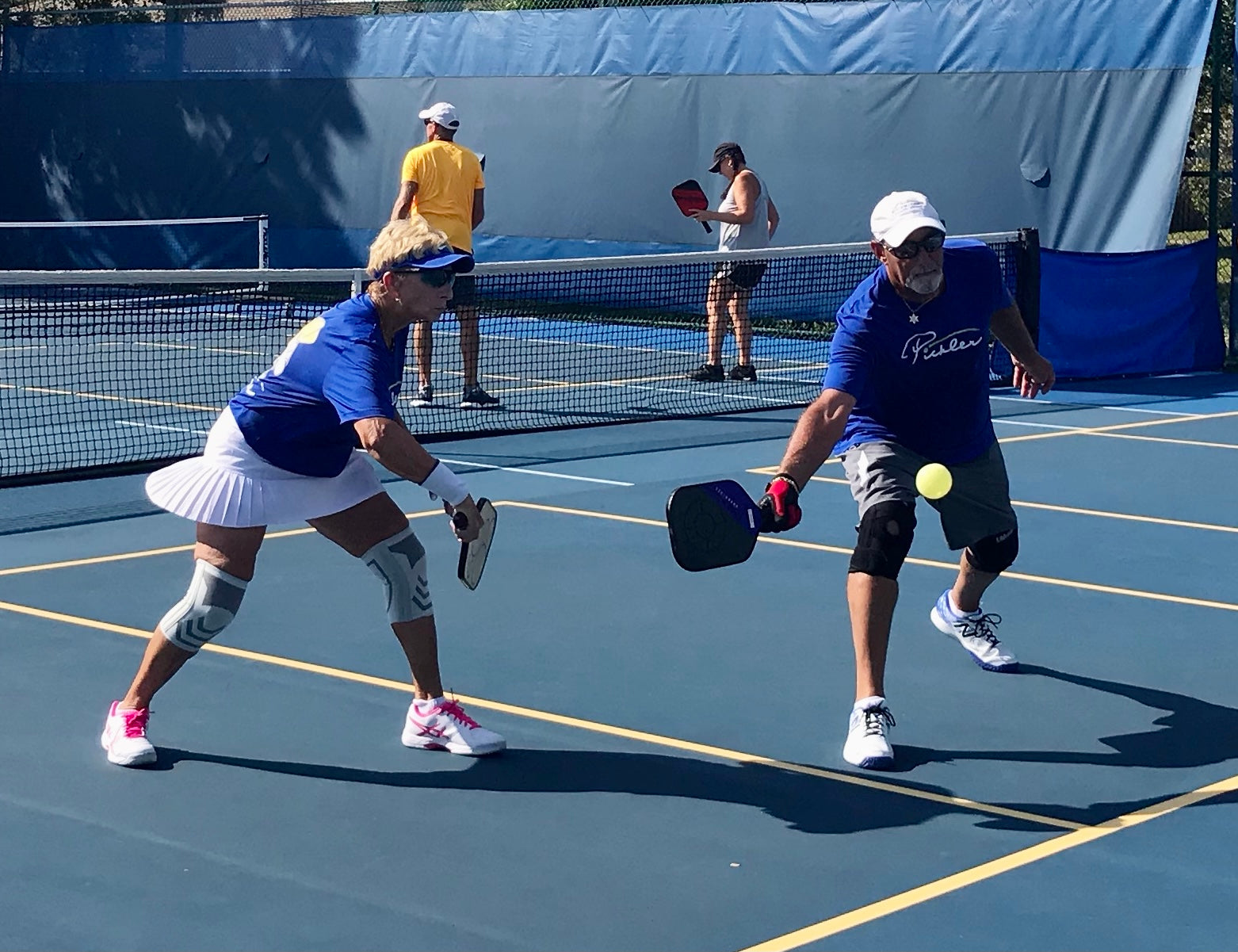
Dinks & Volleys
The middle strategy can be most crafty or strategic when you are at the Non-Volley Zone (or Kitchen) line. Let us explain, as this is a bit more advanced and may require a bit of patience.
First and foremost, when hitting dinks and volleys at the Non-Volley Zone (or Kitchen) line, the middle strategy can be effective to cause your opponents to fight in the middle. However, it would not be wise to hit to the middle every shot. It is important to mix up your placement.
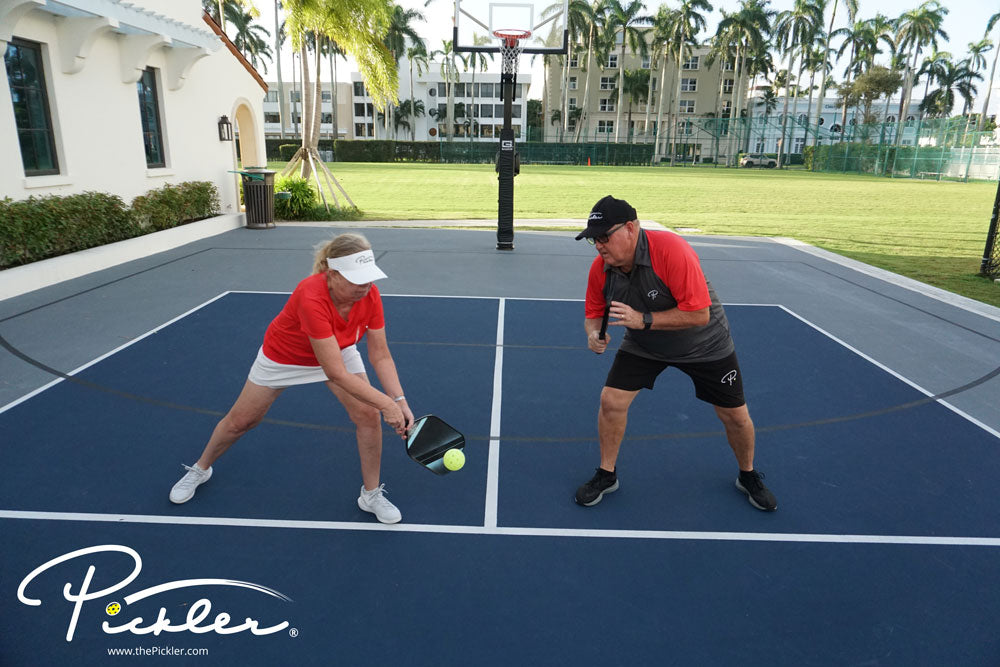
With that said, you can use dinks and volleys to the middle to open up other parts of the court, like the sidelines, and vice-versa. For instance, say you take a dink to the middle of your opponents in doubles pickleball. Both of your opponents take a step toward the middle. When you opponents return the pickleball to you, since they both took a step toward the middle, you now have more room to hit the pickleball toward the sidelines. Then, your opponents will move toward the sideline to return the pickleball. Now, you have even more room in the middle of your opponents because one moved toward the sideline. See a pattern? Use the middle dink to help you open up other parts of the court.
You may not always win in one shot. Rather, it is important to create and craft a point using multiple shots to set up your eventual winning shot. And, by using the middle dink or volley, as well as a sideline dink or volley, you may be setting yourself up for your eventual winning shot between your opponents.
It is also worth noting that a middle dink or volley can help you avoid Ernes from advanced players.
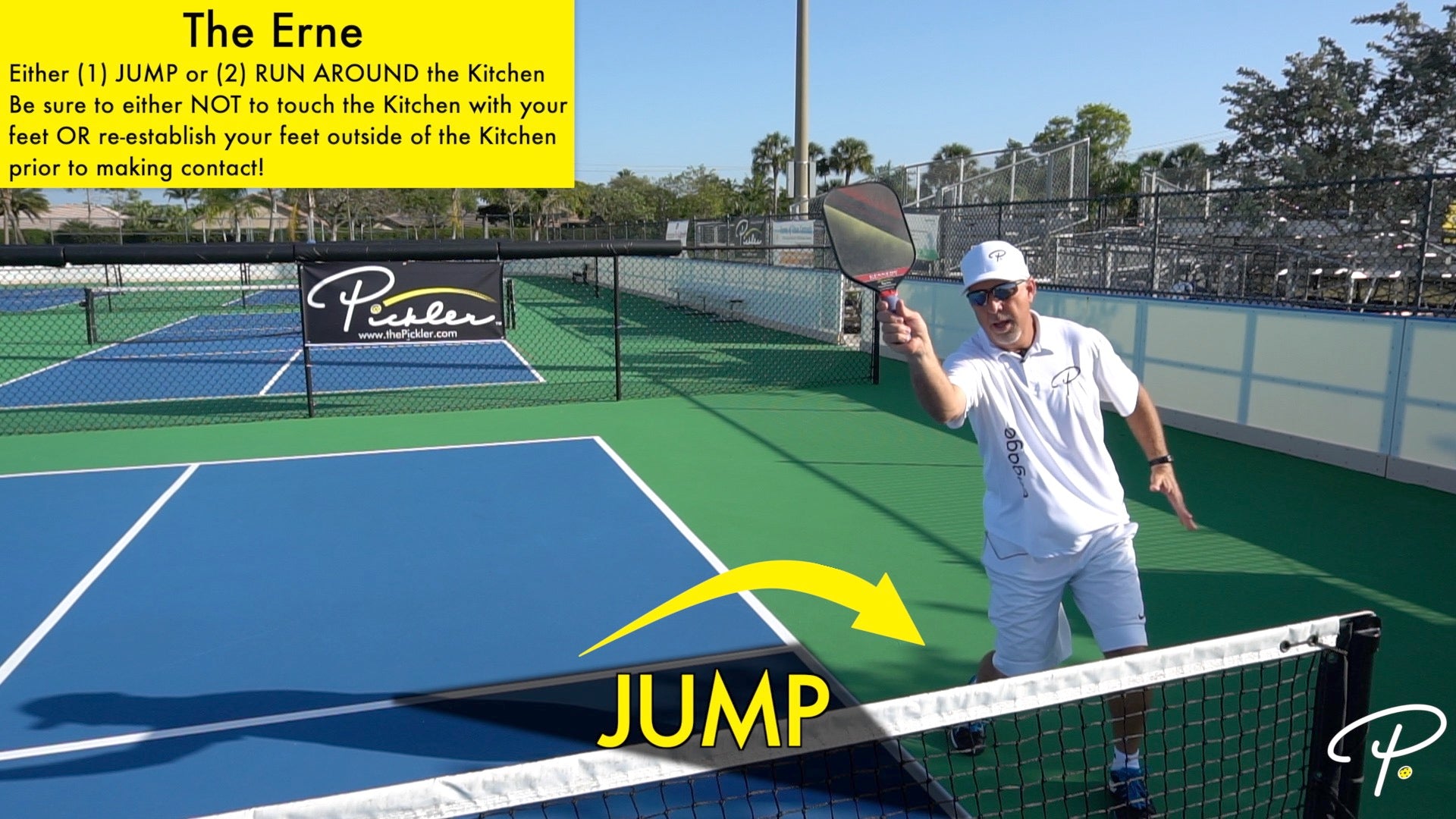
Overheads
Hitting overheads between your opponents is a high percentage shot. This is a great strategy if you do not have a lot of confidence in your overhead. However, overheads straight-on toward the middle of the court are easier for your opponents to defend. If you are playing pickleball players with great defensive skills, they will likely get your overhead back. So, it may be a good idea to hit an overhead with an angle. Then, like we discussed with dinks and volleys, you will open up space in the middle of the court, as your opponents will run wide to retrieve your angled overhead. If your opponents retrieve your angled overhead, then you will have an easier overhead, splitting your opponents in the middle of the court. Like the dinks and volleys, use your middle shot to create space on the court for your eventual winner.
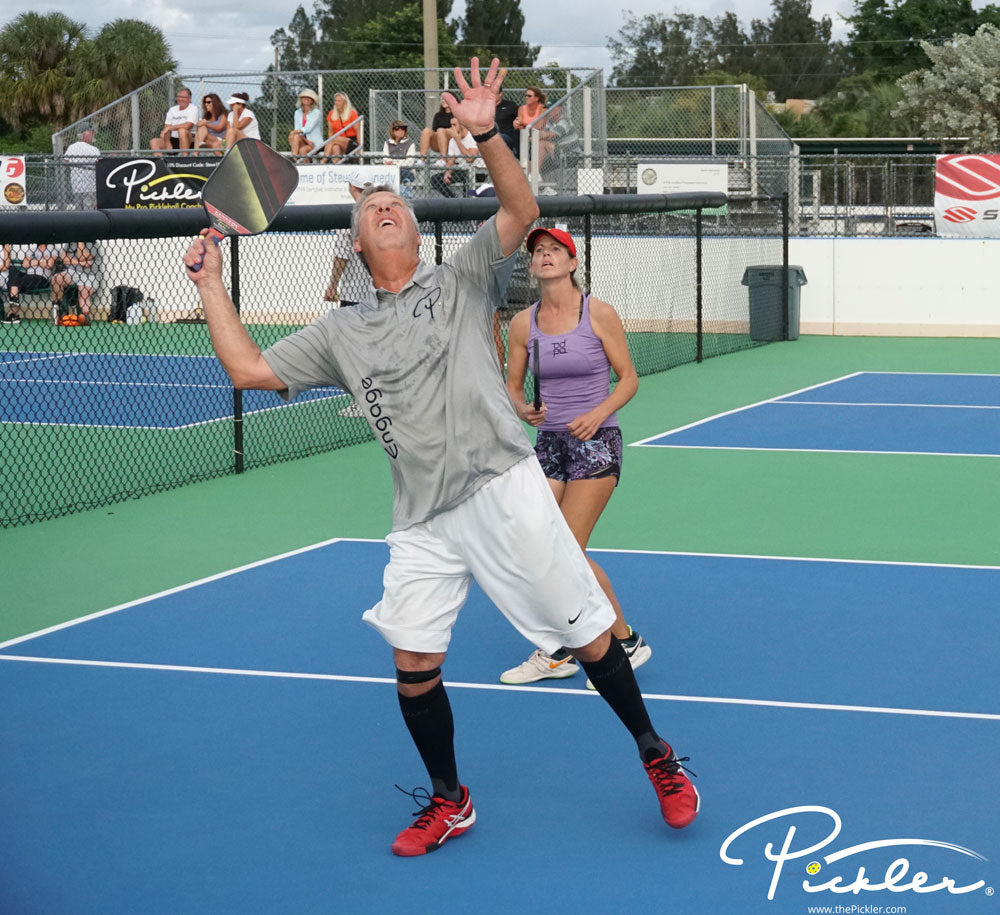
Watch the Pro Pickleball Players!
Some of the best players to watch execute the middle strategy effectively are the pro pickleball players. If you have a chance, sit down and watch the pro pickleball players compete in pickleball tournaments and pay attention to how they use middles shots for both winners and to open up other parts of the court for winners. The middle strategy is so important in the sport of pickleball and it just may be the best pickleball strategy.
Don’t Forget to Mix It Up!
If you do not know where to hit the pickleball, try the middle, which means in between your opponents in doubles pickleball. But, don’t forget to mix it up! Do not be predictable. Use the middle strategy to help you open up other parts of the pickleball court and create space. And, continue to apply pressure with middle shots between your opponents.
WANT MORE PICKLEBALL TIPS AND STRATEGIES?
If you want more pickleball tips and strategies on every aspect of your pickleball game, check out Pickler’s online video lesson collection called My Pro Pickleball Coach. My Pro Pickleball Coach is a fraction of the price of one clinic or even one lesson, and features over 140 video lessons (over 7 hours of instruction!), as well as a corresponding e-book. These online video lessons are available on demand 24/7 and breakdown every aspect of the sport of pickleball, including pickleball drills, strategy, and advanced concepts, so you will play your best pickleball.

